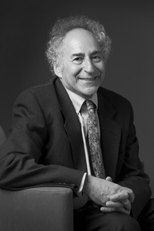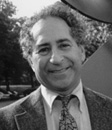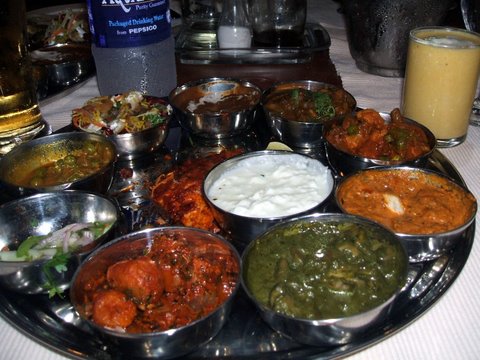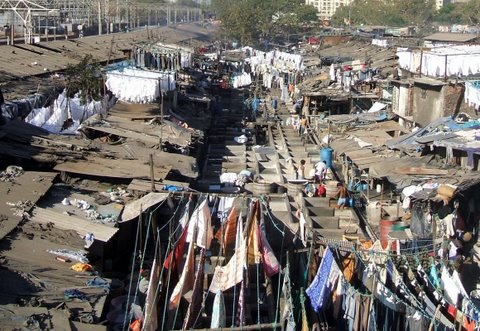Exploring Southern India: Land of Amazing Contrasts
"Exploring Southern India," with photographs taken by me and Marcia Jacobson, The Syracuse Post-Standard Sunday STARS Magazine, June 7, 2009, 11-13.
When you say Agra to most Western tourists, they think Taj Mahal, but when you say Southern India nothing jumps to their minds. After the November 2008 Mumbai terrorist attack, this relatively neglected site has become even more so, but a visit can be the trip of a lifetime, combining exotic sightseeing in an ancient culture and natural beauty with days of relaxation.
My wife, Marcia Jacobson, and I had whetted our appetite for India on a tour in Dec. 2000-Jan 2001 that included Delhi, Jaipur, Agra, Khajuraho, Varanasi (Benares)—an area known as the Golden Triangle, much of which is in the state of Rajasthan, although New Delhi is in the state of Delhi-- before ending up as, our tour did, in Katmandu, Nepal. In 2000-2001 most trips organized in the US either took a very few days in Southern India or finished, as our trip did, in Katmandu, Nepal. The goal of our return to India, the world's largest democracy with the world's second largest population of 1.17 billion, was to explore southern India.
With the help of iExplore, a Chicago company that plans private tours, we developed our three-week itinerary, leaving on Feb. 5, 2009 and returning Feb. 26. We had our own drivers and guides and a small air-conditioned Toyota Innova —chosen from a small list of possibilities of varying cost—as our car throughout. As happens on international trips, iExplore outsourced us to Travelite in Delhi who outsourced to Marvel travel who outsourced us to local managers in each city.
After an exhausting 27 hour trip from our NYC hotel to our India hotel—featuring a direct Air India thirteen hour plus flight to Delhi, a three and half hour layover which become four and half due to a flight delay, and a 2 ½ hour flight to Chennai (formerly Madras) —we arrived past midnight India time at our Chennai hotel, the splendid Trident which was close to the airport, a plus after an epic journey. Air India should be known as the screaming airline because most Indians do not believe in pacifiers or baby aspirin or a spoonful of Dimetapp to quiet their children and help them endure the painful change in ear pressure and the mostly India passengers accept this as the norm. On both flights I sat in the second row (families with children get most of the first row) and that was a major error.
In part because of its massive population but also because of its amazing cultural and economic variety, one is struck continually by India's vivid contrasts: Between, on one hand, ancient temples within driving distance of Chennai as well as all over the state of Tamil Nadu and, indeed, throughout Southern India and, on the other modern Bangalore; between beautiful Goa beaches and sandy debris filled areas bordering the streets where one expects sidewalks; between prosperity and desperate poverty—specifically, between people hawking cheap baubles on the streets or working in menial jobs, and, on the other, $2000 a foot apartments inhabited by government officials and Bollywood film stars in Mumbai; between ancient erotic sculptures and Hindu moral police who frown upon unmarried men and women consorting together; between huts and hovels and luxury hotels where tourists and international business people stay; between ambitious hard-working young adults holding responsible positions in a country willing to confer leadership positions on its rising generation and a caste system which still confines some people to a life of misery, including ten years old girls begging while holding babies in scenes right out of the Oscar winning Slumdog Millionaire; between traditional dress, especially the beautiful saris on the women, and western dress, most notably in Bangalore and even more so in Mumbai and Goa; between ostentatious sexism and capable women in management positions such as the General Manager of the Bangalore Oberoi; between the lush green natural beauty of Kerala with rolling topography and its fertile lush green rice, tea, and sugarcane fields and teaming noisy sprawling cities like much of Chennai and Mumbai; between occasional highways and but more often terrible roads, sometime barely more than potholed sandy paths; between quiet Hindu temples (and far more clamorous temples which seem to be part of a religious industry) and mosques and churches and even a rare synagogue.
Because of its population density and extremes, India is the difference that nullifies all difference. Or as a colleague hyperbolically remarked to me before I went the first time, "After India, the rest of the world looks like South Florida."
In the state of Tamil Nadu, the center of the Ancient Dravidian civilization, the teeming, electric city of Chennai (formerly Madras) is India's fourth largest city whose street life would recall the even larger Delhi and Mumbai were it not for about eight miles of wonderful seashore known as Marina Beach.
The great sites in Southern India are Hindu temples and to enjoy them it is best to read a little beforehand about Hinduism and in particular the most important Gods: Shiva, Parvati, Brahma, Vishnu, Krishna, Ganesha, Ram and company. Basic information can be found on line. The temples are an energetic even chaotic potpourri of spirituality, piety, pilgrims, worshippers, weddings, beggars, shops and, alas public urinals. Priests occupying sanctuaries—some forbidden to non-Hindus—pray as intervening figures to the various gods. Within the temples, the intermingling of spirituality and everyday life is different from other religions.
A highlight of our learning about Hindu temples was our trip to Mahabalipuram, 37 miles south of Chennai, which has three wonderful sites from the Pallava dynasty: the shore temple, a cave temple with wonderful rock-cut relief sculptures and five temples called rathas, also rock cut; rathas are facsimiles of temples that are carried through the streets in holiday procession. The next day we drove two hours to Kanchipurim and saw three of the five major the eighth century temples: Kailasanatha, Sri Ekambaranathar—both devoted to Shiva and Vaikunta Perumal—devoted to Vishnu.
In Chennai, we saw the wonderful ancient bronzes collection with its focus on depictions of Shiva dancing and his wife Parvati in the National Museum as well as Chennai's most active Hindu temple, Kapaleeshwarar, dedicated to Shiva and the Catholic Basilica of San Thome, in honor of Doubting Thomas the Apostle who was supposedly martyred here. In Trichy, we saw India's largest Hindu temple, the imposing and elegant Sri Ranganathaswamy dedicated to Vishnu with a sanctum surrounded by seven walls. In Tanjore, the great site is Brihadishwara, a Word Heritage Site that is one of the great architectural triumphs of the Chola Dynasty which peaked between 850 and 1270 and whose capital was Tanjore. Here we had the thrill of being blessed by the temple's residing elephant, which occurs when you give the elephant's trainer an offering, and the elephant touches your head gently. In Tanjore we also visited the former Royal Palace and the Sarawati Mahal library with its wonderful palm leaf manuscript collection.
A four hour drive from Tanjore, Madurai, a city whose roots are more than 2000 years old, features bustling and noisy Meenakshi Temple which has 10,000 visitors each day, virtually all Hindus. We preferred the more contemplative temples to this chaotic venue but understood that that it was a holy venue not only for locals but pilgrims. The Madurai Gandhi museum gives a good lesson in the predatory colonial history of Britain's years in India, but is stiflingly hot and maybe even a tad too polemical.
The next phase of our tour focused on nature. After a four hours drive from Madurai highlighted by some stunningly beautiful views as we journeyed through the Western Ghats, we entered the state of Kerala for a two day visit at and near the Periyar Wildlife Sanctuary, where we took two boat rides in the hopes of seeing elephants and tigers but settled for bison, wild boar, antelopes, monkeys and various birds. We stayed at the rather pricey Spice Village in Kumily which featured an Indian dance concert and locally grown foods. Spice Village is an environmental friendly resort on beautiful grounds; our accommodation was a small one-roomed cottage thatched with elephant grass. In the immediate area, we had a wonderful elephant ride—no matter how serious the trip, one should not neglect the child within-- and we took a tour of a spice plantation with our knowledgeable guide.
We then went to Kumarakom Lake Resort in the Kerala district of Kottayam. The Resort is a luxury property overlooking a lake where many of the rooms are individual cottages with carved teak ceilings and their own small swimming pools and every effort is made to cater to the tourists' every wish and desire. The hotel offers complimentary sunset cruises and has a beautiful infinity pool. Many hotel clients choose an all night houseboat cruise on elaborately furnished houseboats the hotel owns, but we settled for a half day house boat cruise on the lake; we had our own small, extremely modest boat staffed by three, but while relaxing and enjoyable we found it a tad slow until the scenery improved in the last two hours when we entered small canals in the backwaters and could see houses and rich green rice fields. Our spa massage—with special "ayurmedic" oils-- was most enjoyable and my morning swims in the infinity pool was a highlight of our two nights at the Lake Resort.
We thought our stay there would have a strong focus on birding, but the Resort focuses more on comfort and provided a nice respite. Our trip to the nearby bird sanctuary was a fiasco, not only because there were few birds at noon, but also because our so-called guide knew no English, and nothing about birds, and didn't even bring binoculars to supplement ours.
We drove a few hours to Cochin. One highlight of our Kochi (formerly Cochin) visit was the Kathakali ritual dance-drama show with ancient techniques dating back to the 2nd century AD. Other important sights were the Pardesi synagogue dating back to the 16th century—only a few Jews remain of a once flourishing community-- and the Hindu murals in the Mattancherry Palace as well as the Cochin fish market and the centuries old method of catching fish by means of nets lowered and raised by wooden pulleys.
After flying to Bangalore in the state of Karnataka, we drove three and half hours to Mysore, an attractive city often missed by tourists except for those who visit the nearby national preserve for a short Safari, something we should have done but didn't. We had been told the likelihood of seeing tigers was remote, but we met a few people who saw them. Along the way to Mysore stopped at the palace of Tipu Sultan who along with his father allied with the French and defeated the British before later succumbing; we also visited a wonderful ancient Hindu temple. At Mysore we saw the sumptuous year round palace of the same former king who decorated the summer palace but whose taste took a much finer turn when he built this at the turn of the twentieth century. At Mysore we stayed at a former palace, the Lalitha Mahal, where the faded elegance of our rooms and fastidiousness made us feel that we were experiencing the last breaths of colonial elegance.
Our abortive quest to see wild tigers in Periyar took us to the Mysore zoo that seems to be slowly—very slowly—transforming itself from a zoo with caged animals to one with natural habitats. The zoo has more tigers and leopards than most zoos, and is worth a visit. We also enjoyed the Devaraja flower and vegetable market and a night visit to the stunning illuminated fountains at Brindavan Garden 25 kilometers away.
|
In this part of our trip, Nandi, the bull Shiva uses to transport himself played a role. In Mysore we visited the beautiful Sri Chamundeswari temple dedicated to Shiva and close by, the second largest Nandi, carved from a single stone, in all of India. The very next day in Bangalore we saw a rare Bull Temple actually dedicated to Nandi, the third largest Nandi in India that is carved from a single stone. We also visited Lalbagh Botanical Gardens as well as Karnataka Chitkarala Parishat, an art museum that featured leather puppets and marionettes, but which like most Indian museums, lacks air conditioning and sufficient labeling. We also visited the summer palace of the former India king of the area, one whose taste in paintings tends toward tasteless eroticism if not soft porn.
|
At the Bangalore Oberoi, we had a sumptuous thali--a presentation of diverse dishes in small portions-- cooked by Executive chef Rakesh Uphadhyay and his staff. Indian meals at their most sophisticated depend on a symphony of flavors and textures.
Our next stop was Goa where we stayed three nights at the Intercontinental—also known as the Lalit Goa Resort--in Canacona in South Goa. Within the resort compound, we had the use of a luxury villa with a private swimming pool, thanks to an Indian friend whose family owns the villa. We spent some time reveling in magnificent sunrises and sunsets on the resort's beautiful beach, a beach among the most spectacular I have seen in a lifetime of collecting beaches. We also saw some of the highlights of Old Goa, especially the cathedral and Basilica from the Portuguese era. India invaded and reclaimed Goa in 1961 from the Portuguese and the island still has more of a European flavor than the rest of India.
After three glorious days in Goa we flew to Mumbai (Bombay), our final stop before our 16 hour direct flight back to New York. Our elegant hotel, the JW Marriott, overlooked the Arabian Sea where we once again enjoyed a terrific sunset.
|
Growing up in the metropolitan New York region and visiting Los Angeles, I have seen traffic jams, but nothing can equal rush hours at Mumbai and those hours extend for 3 hours in both the morning and evening.
Not to be missed in Mumbai are the Elephanta Island caves reached by a pleasant hour boat ride. They date to between the fifth and eighth century and are carved in basalt rock. The main cave is a temple to Shiva featuring a beautifully imposing six-foot statue of Shiva. I highly recommend the Gandhi museum on the site of the house where he stayed when visiting Mumbai; the museum offers a fine historical presentation of Gandhi's role in achieving India's independence in 1948. We enjoyed the Keneseth Eliyahoo synagogue, built by a congregation of mostly by Iraqi Jews and featuring Eastern decorative motifs. In Mumbai we also saw the sites of the 11/26 terrorist attack, including the Taj Hotel and Victoria station, as well as the port of entry for the terrorists.
Conclusion: For experienced travelers, Southern India is one of the trips of a lifetime and less expensive than one might think. Even before the terrorism in Mumbai last November, it was a neglected venue that is serviced by few American tours companies. Once a year, Elderhostel offers 13 day or so group tours to southern India and several companies now combine the Golden Triangle and samples of Southern India. Security at airports and hotels was comparable if not greater than any I have ever seen, even in Israel at times of high alert.
Dinner for two (excluding alcohol) rarely cost over $40 at the best hotels and often are close to $25. Gradually, roads and regional airports are being built to make travel easier. Yes, you will see grinding poverty, hovels and huts, troubling caste and class distinctions amidst luxury and wealth, poor roads, dust, garbage strewn about. But you will encounter warm and generous people, you may be invited to share meals at very modest weddings in temples, you will see natural beauty, learn about an ancient civilization and be moved by the spirituality of still active temples dating back more than a millennium. Even during the international economic crisis, India is making economic progress and bringing more and more people into the middle class, notwithstanding the kind of grinding poverty and day-to-day struggle for survival that is shown in the aforementioned Slumdog Millionaire.
To be sure there are minor difficulties. With many places lacking airports, and many roads that are narrow and hardly maintained, it takes a long time to move about. Indian English is not American English and sometimes it is difficult to understand local guides who have not traveled or had much contact with Americans. Many members of the hotel staff speak either no English or a kind of Pidgin English, but overall the hotels are more polished than other essentials of tourism.
The tourist infrastructure in South India is inconsistent, and, while our drivers were excellent-- for ten days from Trichy to Cochin, we had a wonderful driver with a fine sense of humor named Senthil—our local guides and local representatives varied greatly. At times I was not sure whether we had a wonderful trip because or in spite of Marvel tours which managed our tour until we flew to Bangalore. As one moves away from major capitals, the local guides and local managers do not speak English well and are difficult to understand, and some of them are not professionally trained although they want to please and are apologetic when they make a mistake or don't understand you. Although we had a few wonderful guides—enthusiastic, informed, generous with their time--be aware that groups often get the best guides because the larger the group the better the tips. But once we made known our displeasure with incompetent guides, Travelite coaxed most of the local managers to provide at least competent guides. Still, were the guides better trained, large scale tourism would have a better chance of flourishing. Nevertheless, we had one of the best trips of our lives, and readers of these pages know we do get around.


 Mysore, Nandi Bull Temple
Mysore, Nandi Bull Temple Thali, a vegetarian meal
Thali, a vegetarian meal Mumbai, laundry
Mumbai, laundry